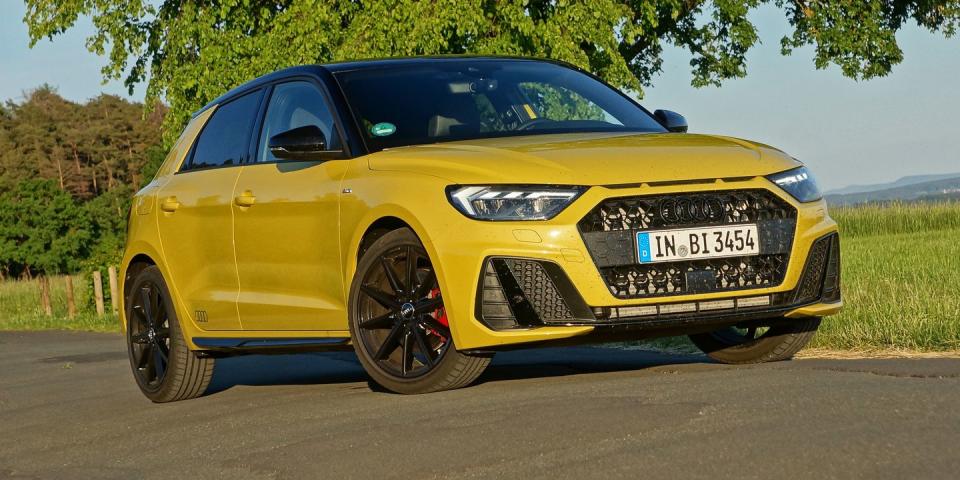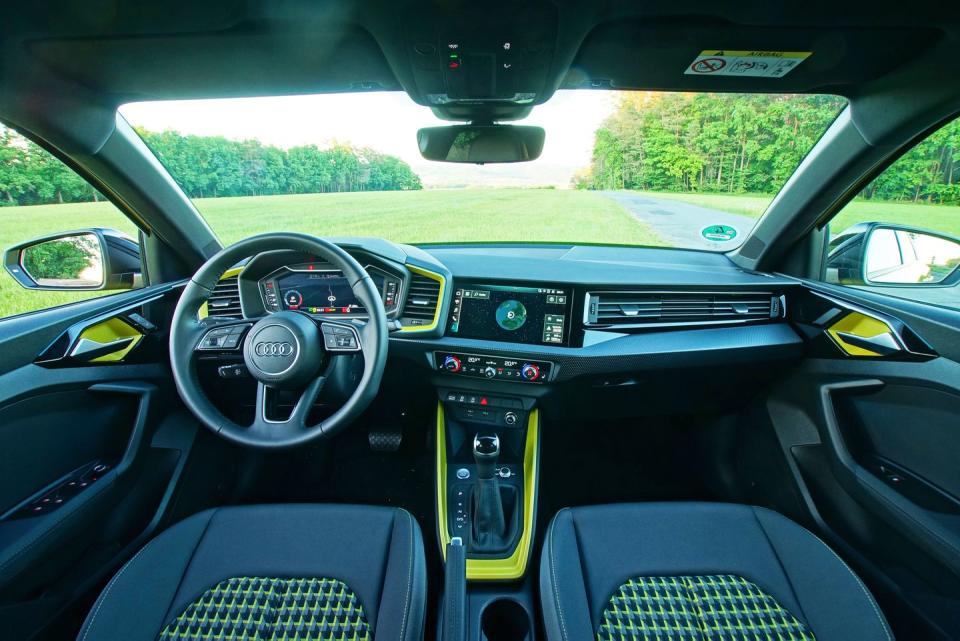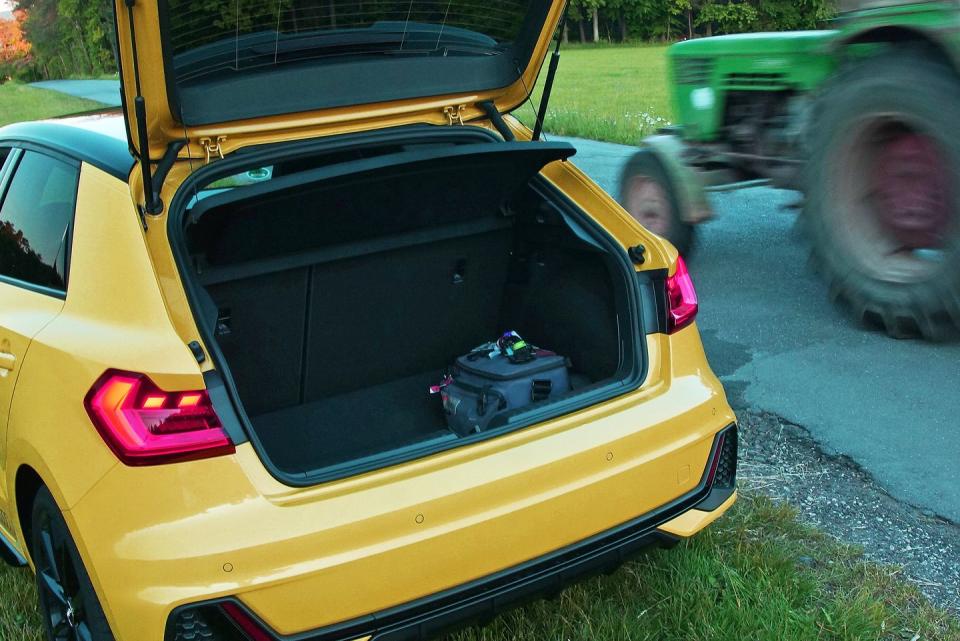The 2020 Audi A1 40 TFSI Offers a Premium Experience in a Small Package

When we first drove the tiny Audi S1 almost six years ago, we called it the ultimate subcompact. Last year, we were unhappy to learn that the company decided not to develop a direct replacement. To make an S1 feasible, Audi would have needed its sister brands' cooperation, and Volkswagen and SEAT decided to skip a hypothetical Polo R and Cupra Ibiza. But Audi promised us the top-of-the-line A1 wouldn't disappoint us, even if it no longer wore S1 badges.
While the S1 was powered by a 228-horsepower turbo four that channeled its output to all four wheels through a six-speed manual transmission, the A1 40 TFSI is a front-driver, with its 197-hp 2.0-liter inline-four mated to an obligatory six-speed dual-clutch automatic. The "40" part of the moniker pertains to Audi's new output-based nomenclature, which ranges from 30 to 70. Within that hierarchy, a "40" designation means a car producing between 167 and 201 horsepower. Don't think about it too hard. Just know that a 40 is better than a 35 and way better than a 25.

Behind the wheel, the latest A1 doesn't feel like it gives up 31 horsepower to its predecessor. The new car is lighter, charging forward with a vengeance when the turbo starts delivering boost. The sprint from zero to 60 mph takes an estimated 6.2 seconds, and on the empty autobahn of the COVID era, we were able to confirm the car is capable of reaching its 146-mph top speed.
The VW Group's well-proven dual-clutch transaxle shifts quickly and seamlessly, and we welcome its paddle shifters. You can manually choose gears using the A1's console shifter, but you push the lever forward to upshift and pull back to downshift, which isn't our preferred setup. Sadly, Audi opted to skip a manual transmission option, even though such a transmission would technically fit: Until recently, it was available on the VW Polo GTI.

We found the A1 40 TFSI surprisingly economical. Thanks to its lightweight and modern engine, it's easy to achieve 35 mpg or more. A diesel is no longer available on the A1, so this top-of-the-line gasoline engine is by far the best in the A1's lineup, which also includes two 1.0-liter three-bangers, rated at 95 and 116 horsepower, and a 150-horsepower 1.5-liter four.
Our A1 40 TFSI was an absolute joy to drive on virtually any type of road. About the size of a Mini, the four-door A1 is extremely nimble in the city, but its chassis truly shines on country roads. It features struts on the front axle and a compact torsion-beam rear axle. The steering is crisp and nicely weighted. Fitted with electronically adjustable dampers and optional 18-inch wheels, this minicar is a champion in tight corners, remarkably neutral, and easy to position. In sport mode, it will brake an individual corner to counter understeer. On the autobahn, the A1 remains stable even as it approaches its maximum velocity.

The interior is sufficiently large even for longer trips, at least up front. But even the rear seats work well unless the front seats are pushed too far back. The cargo area holds 12 cubic feet when the rear seats are up and can be expanded to 39 cubic feet when they are folded down. To put that in United States-centric terms, that seats-up cargo capacity is about half that of a Volkswagen GTI.
The A1 comes with a standard 10.3-inch digital gauge cluster. The graphics are reconfigurable, to an extent. Sport mode does little to change the appearance, with the exception of swapping in cursive numbers. In its upscale models, Audi offers more variation, and it would be sweet to have retro-futuristic bar graphs like on the RS models.

The standard MMI infotainment system uses an 8.8-inch touchscreen, with an optional upgrade to a 10.1-inch screen. In either case, the system exceeds the expectations in this class and would be right at home in more expensive cars. The same, unfortunately, cannot be said of the interior's materials and style. The A1's cabin feels well built, but the trying-to-hard colorful trim and cheap plastics fail to evoke the premium feel that used to be an Audi trademark. To keep the price down, Audi nixed a sunroof or panoramic roof option. The A1's downward mobility would be less puzzling if the A1 didn't have three sister models on the same platform—the SEAT Ibiza, the Skoda Fabia, and the VW Polo. We would have expected Audi to go for an upmarket look for the A1, rather than forced whimsy.

This criticism extends to the exterior of the car: The A1 is well proportioned and looks sporty, but it doesn't try to seem especially upmarket. The outer air intakes up front are fake, as are the three inlets above the hexagonal front grille. Those slits are supposed to evoke the legendary Group B Sport Quattro rally cars, as are the fender flares on the front and rear fenders. Those would have more credibility if Audi hadn't killed the all-wheel drive derivative with the new model.
But those are matters of style and taste. We still like this A1 a lot. It feels substantially faster than its horsepower rating suggests, and it's impeccably built. While we still miss the S1, the A1 40 TFSI is an unapologetically modern alternative to the relentlessly retro Mini. We wish it were available in the U.S.
You Might Also Like

 Yahoo News
Yahoo News 